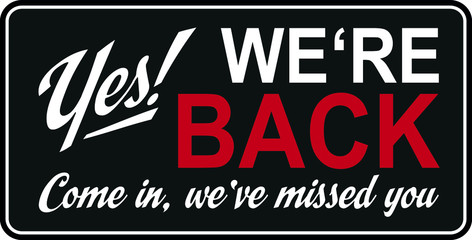Post COVID-19; What Not to Do When You Reopen Your Business
April 28, 2020/ Pause Factory Admin / People Management / 0 comments
Without clear strategic rules guiding businesses and proven right measures on how to keep employees safe, you’re responsible for making your own plan. Here’s how to avoid some of the most common potential problems.
As states grapple with timelines for reopening their economies, businesses now face the challenge of how and when to bring employees back safely. Several factors make this task difficult for business owners to navigate. Safety guidelines may differ from state to state, so companies with multiple locations across the country need to stay up to date on the various guidelines

Here Are Five Tips On What Not To Do When Making Your Plan – by Experts
1. Don’t automatically adopt a company-run temperature-taking operation.
Taking employees’ temperatures sounds like a smart safety measure until you consider the logistical challenges involved.
Expert points to three big areas of concern keeping that biometric data private once you collect it, figuring out how to compensate employees while they wait in line, and keeping the people in that line safe, given the imperative to social distance. To be sure, employers may not have a choice on this matter because some states may issue reopening guidance that advises companies to begin taking their employees’ temperatures. If your business is in one of these states, Expert says some companies are getting creative to avoid the data privacy problem by using instant-read thermometers that they simply show to the employee after they’ve taken their temperature. “Collect as little data as you can,” Expert says.
If you’re able, don’t attempt to train someone on staff to take temperatures, he adds: “Look for ways to contract with [health care professionals] to the temperatures.” They will have the proper equipment and necessary training.
2. Don’t assume social distancing will be easy to enforce.
Similar to taking temperatures, while social distancing seems simple in theory, it’s much more difficult to execute. Even if you can move cubicles so that everyone is six feet apart, you also need to address break rooms and bathrooms. If you can, make communal restrooms into one-person bathrooms. Consider public-facing positions such as receptionists and how you’ll keep them from exposure. And don’t forget hallways. “Make corridors one-way traffic only, ” Expert says. “It sounds silly, but you need to think about stopping face-to-face exchanges even in places like hallways.”
3. Don’t assume all of your workers will feel safe enough to come back to work.
Even if you take all necessary safety precautions, it’s highly likely you will have some employees who won’t want to return to work because they feel unsafe.
“OSHA’s threshold for people refusing to work is when someone is facing a high risk of imminent death,” Expert says. “In those cases, the only way to avoid such a hazard is for the person to not work. Most of the time employees can’t refuse to show up for work. So what do you do when they just decide not to show up?”
Start thinking now about how you’ll handle operations if many people still want to work from home and how you’ll treat all employees fairly in this case.
4. Don’t equip your team with masks without a proper procedure in place.
Again, some state orders may require you to supply your team with masks. In many cases, this order won’t come with any additional guidance, so it will be up to your company to figure out a plan for getting a sufficient supply, keeping them clean, and training employees on how to wear them properly. Another question to consider: What’s your response if an employee wants to wear a bandanna instead of a mask?
“Everyone needs to adopt a policy on this; it doesn’t matter if you’re a bank or a food processing plant,” Expert says. “It’s putting every business on equal footing in terms of workplace safety.”
5. Don’t forget to come up with a plan for how to handle visitors to your office.
All of the careful precautions you take to keep your staff safe will be for naught if you don’t also think about how to handle third-party visitors to your office, whether it’s package delivery people or clients. Most businesses Expert advises, from retail to professional services companies, are opting to post signage outside of their buildings advising visitors not to enter if they’ve had Covid-19 symptoms recently or been in contact with someone who has been infected. Usually, they also stipulate calling the receptionist instead of walking right in.
Authored by Lindsay Blakely
Tags Post COVID-19
